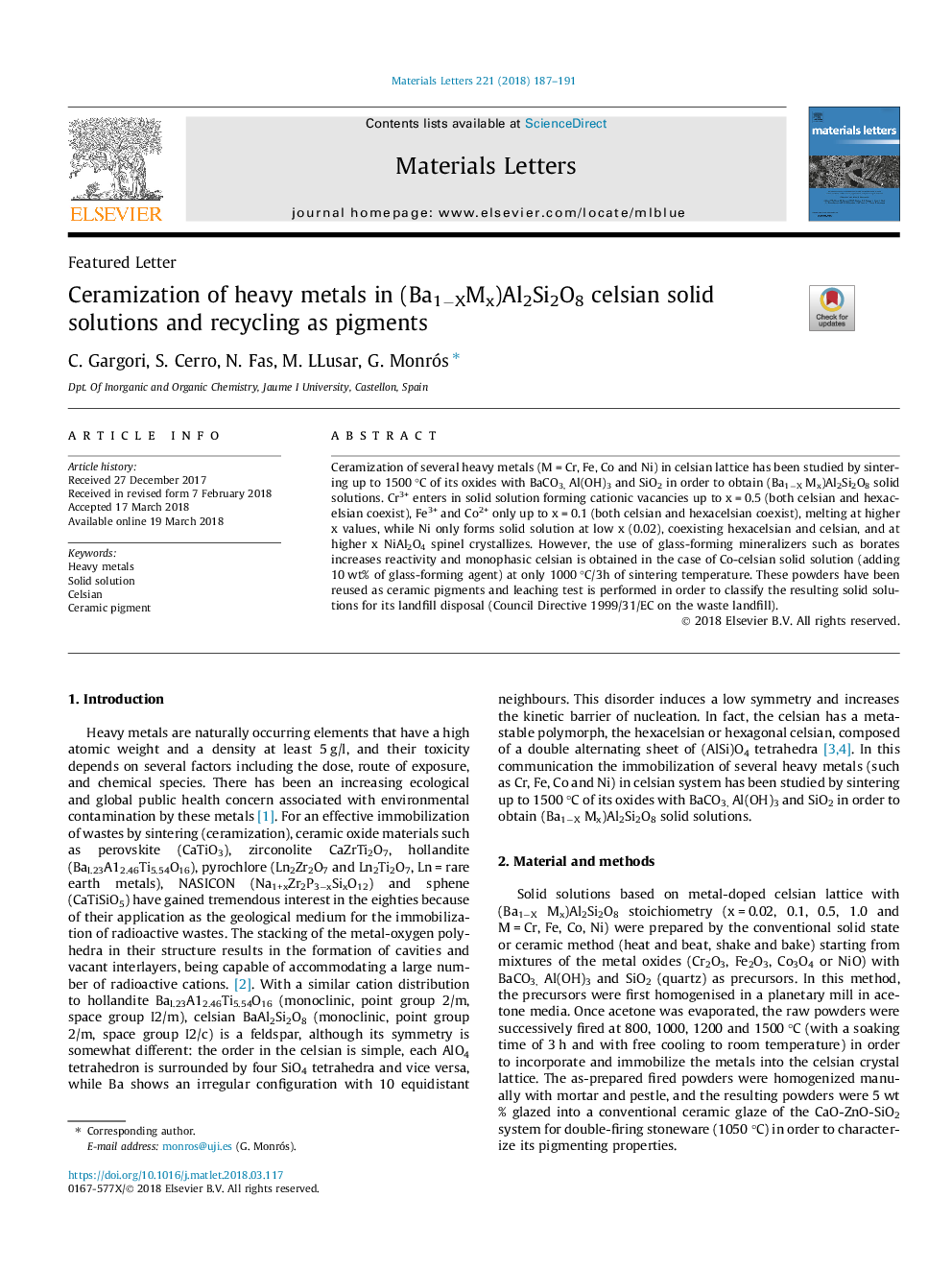| Article ID | Journal | Published Year | Pages | File Type |
|---|---|---|---|---|
| 8013473 | Materials Letters | 2018 | 5 Pages |
Abstract
Ceramization of several heavy metals (Mâ¯=â¯Cr, Fe, Co and Ni) in celsian lattice has been studied by sintering up to 1500â¯Â°C of its oxides with BaCO3, Al(OH)3 and SiO2 in order to obtain (Ba1âX Mx)Al2Si2O8 solid solutions. Cr3+ enters in solid solution forming cationic vacancies up to xâ¯=â¯0.5 (both celsian and hexacelsian coexist), Fe3+ and Co2+ only up to xâ¯=â¯0.1 (both celsian and hexacelsian coexist), melting at higher x values, while Ni only forms solid solution at low x (0.02), coexisting hexacelsian and celsian, and at higher x NiAl2O4 spinel crystallizes. However, the use of glass-forming mineralizers such as borates increases reactivity and monophasic celsian is obtained in the case of Co-celsian solid solution (adding 10â¯wt% of glass-forming agent) at only 1000â¯Â°C/3h of sintering temperature. These powders have been reused as ceramic pigments and leaching test is performed in order to classify the resulting solid solutions for its landfill disposal (Council Directive 1999/31/EC on the waste landfill).
Related Topics
Physical Sciences and Engineering
Materials Science
Nanotechnology
Authors
C. Gargori, S. Cerro, N. Fas, M. LLusar, G. Monrós,
